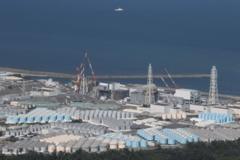On Wednesday, all 4,000 employees at the embattled Fukushima nuclear facility were evacuated as tsunami warnings spread throughout Japan. The alerts emerged after a powerful earthquake struck off Russia's far eastern coast, prompting concerns of tidal waves. The Fukushima region still grapples with memories of the catastrophic events from March 2011 when a 9.0-magnitude earthquake and a subsequent tsunami devastated the area, leading to a nuclear meltdown at the plant.
The 2011 disaster resulted in substantial loss, claiming over 18,000 lives and leading to widespread evacuations. The nuclear facility faced severe damage, with cooling systems knocked out and radioactive materials released into both the atmosphere and the Pacific Ocean. To date, the cleanup operation remains an arduous journey, with over 880 metric tons of hazardous material still present at the site, and removal efforts are expected to take decades.
Recently, Tokyo Electric Power Company Holdings (Tepco) announced delays in the timeline for decommissioning the plant, pushing the full-scale removal of nuclear waste back to at least 2037. This has raised concerns and skepticism among experts about the feasibility of achieving a complete cleanup by the originally targeted 2051.
In light of the events and the ongoing reliance on nuclear energy, Japan's government is considering a return to nuclear power, despite the fears and opposition from many locals. The recent tsunami warnings, including potential wave heights of up to 3 meters (9 feet), have intensified anxieties across the nation, with many individuals evacuating sought-after safety in response to the alerts.
Japan's unique geographical location, sitting on the Ring of Fire, predisposes the nation to frequent seismic activity, experiencing around 1,500 earthquakes annually. As fears of another significant earthquake persist, many citizens remain vigilant and prepared for possible future disasters amidst the ongoing dialogue about nuclear energy's role in the country's energy strategy.
The 2011 disaster resulted in substantial loss, claiming over 18,000 lives and leading to widespread evacuations. The nuclear facility faced severe damage, with cooling systems knocked out and radioactive materials released into both the atmosphere and the Pacific Ocean. To date, the cleanup operation remains an arduous journey, with over 880 metric tons of hazardous material still present at the site, and removal efforts are expected to take decades.
Recently, Tokyo Electric Power Company Holdings (Tepco) announced delays in the timeline for decommissioning the plant, pushing the full-scale removal of nuclear waste back to at least 2037. This has raised concerns and skepticism among experts about the feasibility of achieving a complete cleanup by the originally targeted 2051.
In light of the events and the ongoing reliance on nuclear energy, Japan's government is considering a return to nuclear power, despite the fears and opposition from many locals. The recent tsunami warnings, including potential wave heights of up to 3 meters (9 feet), have intensified anxieties across the nation, with many individuals evacuating sought-after safety in response to the alerts.
Japan's unique geographical location, sitting on the Ring of Fire, predisposes the nation to frequent seismic activity, experiencing around 1,500 earthquakes annually. As fears of another significant earthquake persist, many citizens remain vigilant and prepared for possible future disasters amidst the ongoing dialogue about nuclear energy's role in the country's energy strategy.





















